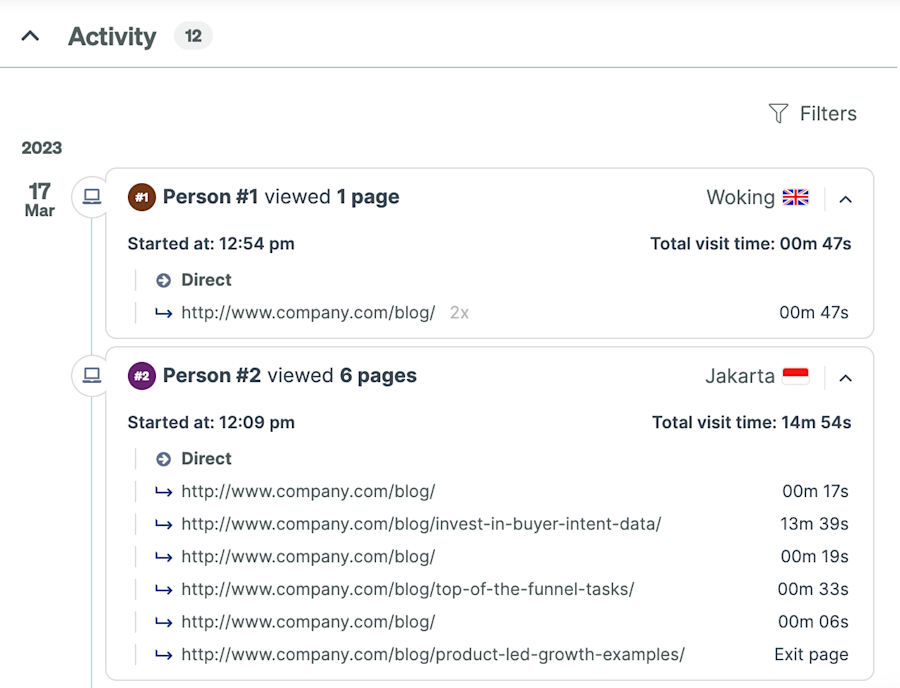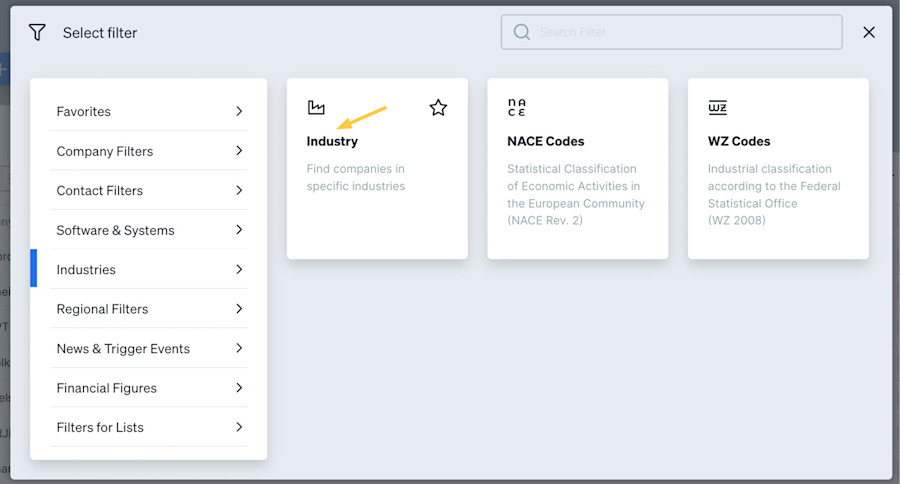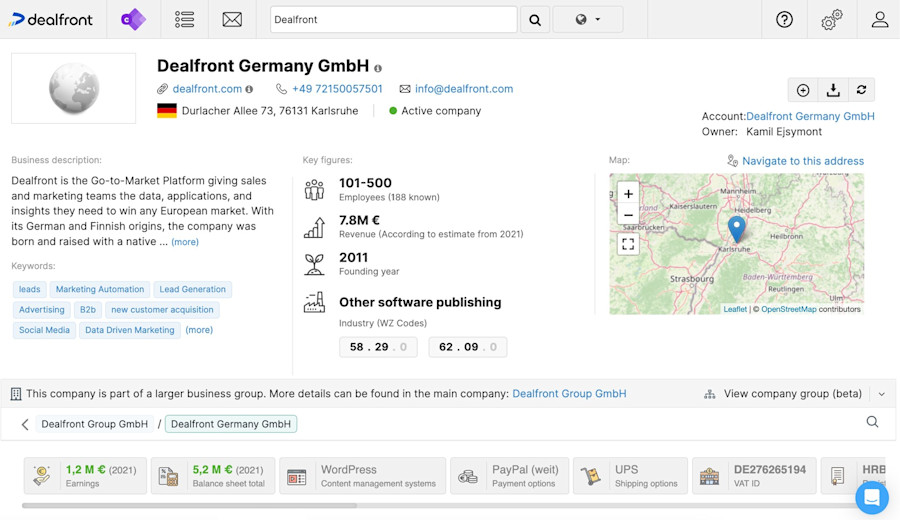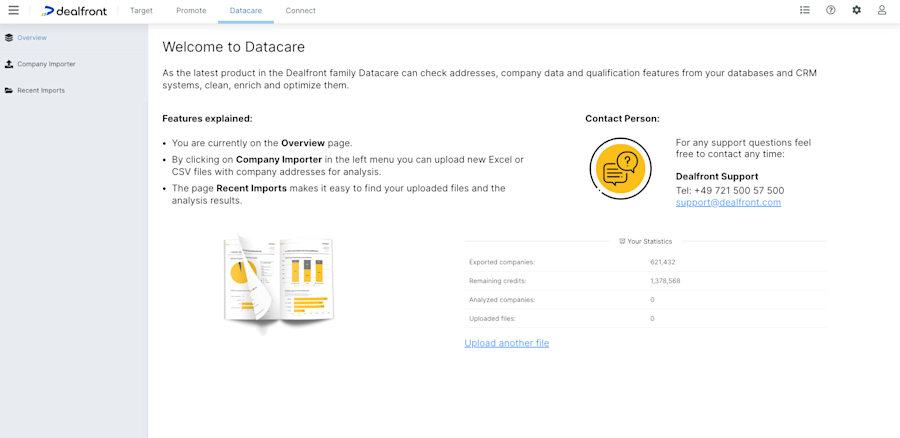The world has seen its fair share of powerful partnerships. Batman and Robin, Spongebob and Patrick, or even peanut butter and jelly. You get the idea. And in B2B, these kinds of partnerships can set the scene for incredible business growth.
Having your marketing and sales teams aligned is absolutely game changing. But, you all know how challenging it can be to get each team to even come out of their respective bat caves and shake hands.
If you want to really see performance improvement and process effectiveness, we all know the alignment between both teams is absolutely crucial. So, what exactly do you need to know and do to make this magic happen?
Understand intent data and sales intelligence
The B2B landscape and its buyers are changing. Now, companies like yours have to build a much stronger bridge between buyers’ expectations and what you offer. Buyers are doing more research and there are so many more tools available on the market for them to choose from.
How can you stay relevant? By harnessing the ‘intent signals’ provided by intent data and insights generated by sales intelligence tools.
Let’s break them down…
What is intent data?
Intent data is a collection of information showing visitor behavior or buying signals on your website. It’s a trail of breadcrumbs that can lead your marketing or sales teams to see where people are going on your website, and what they’re doing once they’re there.
What is sales intelligence?
Sales intelligence covers those deep insights into your target audience. It gives your business a way of more accurately targeting those companies that are in need of your solution right now. So, instead of casting a really wide net hoping to catch anything and everything, sales intelligence helps your sales reps cast a line with a very specific hook for the right fish at the right time.
So what happens when you don’t have to choose and can combine both? B2B growth magic!
4 ways your B2B business can benefit from combining intent data and sales intelligence
Holistic is such an overused word, but it’s the best one to describe what happens when you put intent data and sales intelligence together. With the gathered intent data to see what visitors are interested in, and using sales intelligence to tailor your approach based on that, this much more finely-tuned, personalized strategy will resonate much more with your audience.
1. Deeper personalization
Combining intent data with sales intelligence enables businesses to create hyper-personalized marketing campaigns. While intent data provides insights into what solutions a prospect is seeking, sales intelligence enriches this with context and detailed information about the prospect's organization and its decision-makers. Combined, they allow marketers to craft highly personalized messaging that resonates strongly with each potential buyer, giving them an advantage over their competitors.
2. Improved sales prioritization
When integrated with sales intelligence, intent data can help businesses determine which leads to prioritize. Leads showing higher purchasing intent–as evidenced in their browsing patterns, or content downloads–may be considered high priority. Coupling this with an understanding of the prospect's overall business context can help sales teams focus their efforts more strategically.
3. Proactive outreach
By analyzing intent data, your sales team can predict when potential customers are likely to make a purchasing decision. When incorporated with sales intelligence, this prognosis allows your team to conduct outreach efforts proactively. This strategic move can put your business ahead of the competition by being the first to pitch when the prospect's intent is at its peak.
4. More sales conversions
The combination of intent data and sales intelligence means you are harnessing both qualitative and quantitative data to understand your prospective customers. With this merged intelligence, businesses can tailor their sales techniques and marketing campaigns to align with the specific needs of their audience. This way, you capture their attention which leads to a higher likelihood of conversion and stronger customer relationships.
But how exactly can you actually execute a combined strategy? By adding the right tools to your toolbox…
The right tools for the right jobs
Leadfeeder by Dealfront
With third-party cookies making its final curtain call in 2024, businesses will have to turn to first-party data for their customer data needs. Don’t see this as a bad thing - it’s actually good news. First-party data is nothing to be frowned upon as it’s information that a prospective customer is giving you willingly because they want to be contacted or marketed to.
But what if they don’t sign up for your newsletter or download an ebook?
Web Visitor Identification (WVI)
Leadfeeder is a WVI tool and is a great way to see which companies visit your website, even if they don’t leave their contact information through a form. You’ll get an overview of the pages they’ve visited, and how long they stayed there so your sales and marketing teams can make more well-informed strategy decisions.

With this information, you can qualify the identified companies for your sales outreach or marketing campaigns. Are the companies of interest to your business? If yes, you can use the Contacts overview to reveal more details about the people who visited.

Once you’ve identified the companies and qualified them as your desired targets, you can set up custom feeds using filters to segment those visitors based on how they behave on your website.
Remember, you don’t want to cast a wide net to catch anyone and everyone. You want to focus your attention on those companies that are truly interested in your solution and who very closely fit your ideal customer profile (ICP).
Are you focused on a specific geographical market? Filter based on location to only see those companies within that target area.

You can also filter based on their website behavior. For example, if you want to see companies within that geographic area that visit your pricing page, you can filter by Page URL:

The Dealfront Sales Intelligence solution
If you’ve been lacking high-quality leads and missing out on sales-ready contacts, the Dealfront Sales Intelligence (SI) solution can help your business fix that. Think of this tool as a B2B version of Google that collects information from GDPR compliant data sources for you to use in your B2B sales and marketing outreach and campaign efforts.
Target
This is a B2B prospecting tool where you can use filters to whittle down thousands of companies into a finely targeted list of companies that fit your ICP.

With over 100 filter options, you can find what you’re looking for with just a few clicks. One of the coolest filters in Target is Similar Companies. When you have a saved list of companies you’re targeting or companies that are already your customers, you can use the Similar Companies filter to display companies that already match those in your list.
Connect
Once you’ve used Target to create a list of finely tuned prospects, use Connect to learn more about those companies. It provides you with in-depth B2B data on over 30 million companies collected only from publicly available sources such as official trade registries, company websites, news, and social media.
Using the information found in Connect you can more accurately qualify your target companies:

You’ll get the usual information such as address and contact options but also things like employee count and revenue. Want to reach out to their Head of Sales? Then browse the contact data of their employees:

With Connect you can set up alerts for News or Signals. Did the company just get another round of funding? Now would be a great time to reach out to make them aware of your offering!
Datacare
According to Gartner, poor data quality costs organizations an average of $12.9 million every year. When you have the most current company information available, you’ll save yourself from being part of that statistic. Datacare checks, cleanses, enriches, and optimizes the B2B company data within your sales databases and CRM systems.
All you have to do is import a list of companies from your CRM into the Dealfront platform, map it to the correct fields, and start improving and updating your existing data:

With the imported existing customers list, you can find Cluster Lookalikes. Our AI tools will use the things that all those companies have in common to suggest companies that match those traits too.
The sales team can use this to target these new companies and the marketing team can track their efforts through the Web Visitors tool.
And to make sure your teams are working effectively and efficiently, both the Web Visitors and SI solutions come packed with great integrations. Set up automations to keep the tedious tasks from blocking your workflow.
Stop choosing and start winning with B2B intent data and sales intelligence
In a competitive landscape with many choices, it’s great when we don’t have to choose between strategies or approaches because they complement each other. Combining the strengths of an intent data solution with a sales intelligence platform is like getting a peek into your customers' brains, figuring out what they're after, and, more importantly, knowing how to get your solution to be their first choice.
Imagine being able to design campaigns and outreach that feel like they're speaking personally to each prospect or customer. Or knowing exactly which potential customers are worth spending time on right now. That’s powerful stuff.
So, what should you do next? Time to roll up those sleeves and figure out how you can bring intent data and sales intelligence together to work for your business. Get your sales and marketing strategies right, and use tools that are designed to help you make the most of these insights.
Even better, get in touch with us today to learn more about how you can choose both intent data and sales intelligence to win in your markets!
Now that you're here
Leadfeeder is a tool that shows you companies that visit your website. Leadfeeder generates new leads, offers insight on your customers and can help you increase your marketing ROI.
If you liked this blog post, you'll probably love Leadfeeder, too.
Sign up







